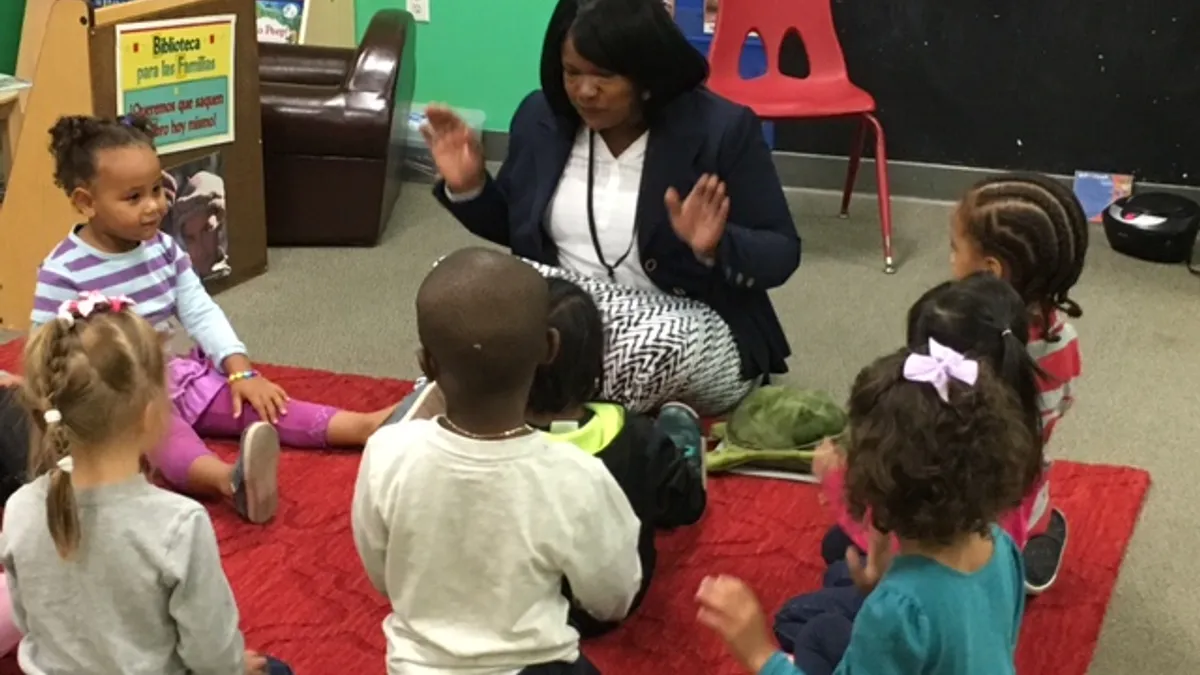Dive Brief:
-
More schools are making efforts to become racially and socioeconomically diverse, but additional resources are needed to further expand integration policies, according to a new report from The Century Foundation.
-
In what the foundation calls “the most comprehensive inventory to date of school integration efforts across the country,” it found that more than 900 school districts and charter schools have efforts underway for student diversity, including districts with self-initiated integration policies and systems under legal desegregation orders or voluntary agreements. Those 907 districts represent 25% of students nationwide.
-
Although some districts that have initiated desegregation efforts have encountered resistance in their communities, there are promising practices and areas of progress that have boosted integration activities in recent years, according to researchers.
Dive Insight:
Research shows students who attend schools with diverse populations perform better academically on average and have reduced levels of racial prejudice. But even though the landmark Brown v. Board of Education school desegregation case was decided 66 years ago, many Black and Latinx students still are disproportionately attending schools that are predominately segregated or underfunded, according to the foundation report.
“The data also shows that parents of all racial and economic backgrounds, of course, want the best education for their child so we have seen that by students going to diverse schools, they are more culturally competent,” said Michelle Burris, a senior policy associate at The Century Foundation and co-author of the report.
After decades of stagnant efforts to desegregate schools, progress is occurring, the researchers found. For example, they discovered that of the 185 districts and charter schools that have self-initiated integration efforts, about a quarter implemented proactive programs within the last four years. Also, about half of those districts and charter schools have no racial or ethnic majority in student populations, compared to only 13% of school districts and charters nationwide.
The other 722 districts are under legal desegregation orders or voluntary agreements. The states with the most districts making efforts to integrate schools are California, Florida, Texas, North Carolina, Iowa and Minnesota.
The three most common and effective ways schools are integrating are through redrawing school attendance boundaries; the use of racial and socioeconomic status for magnet school admissions; and district-wide school choice policies, said Burris.
The report also provides several examples of districts that have made progress on desegregation efforts:
-
Howard County Public School System in Maryland. Howard County Public School System began efforts in 2019 to change school boundaries to create more diverse student populations. Those efforts were met with resistance, including protests and death threats to the superintendent, according to Burris. Despite the resistance, the district continued its plan to change school boundaries, even during the pandemic, though the effort now includes 2,000 fewer students than originally proposed.
-
Minneapolis Public Schools in Minnesota. Minneapolis Public Schools approved new attendance boundaries in early May, a few weeks before the death of George Floyd, a Black man, in police custody in that city. The district’s efforts, which include redrawing school boundaries and centralizing district magnet schools, are guided by its Equity Diversity Impact Committee. Once implemented, the school system is expected to reduce the number of racially and economically segregated schools by more than 50%.
Although most desegregation activity is localized, proponents of school diversity efforts are looking to the incoming Biden administration to reinstate past U.S. Department of Education guidance that would support desegregation efforts and equitable practices, such as 2011 guidance on the voluntary use of race to create diversity in postsecondary admissions policies and 2014 guidance on nondiscriminatory school discipline practices.
Additionally, proponents of school integration are hopeful about grassroots efforts to provide resources and awareness of multi-race and multi-class practices.
“I think it is becoming more in the forefront and so I think it’s right to be optimistic,” Burris said, adding that districts that can be part of a collective community that includes efforts to intentionally integrate or establish anti-racist programs show "the work isn’t going in vain and that there is a nationwide interest.”








 Dive Awards
Dive Awards





